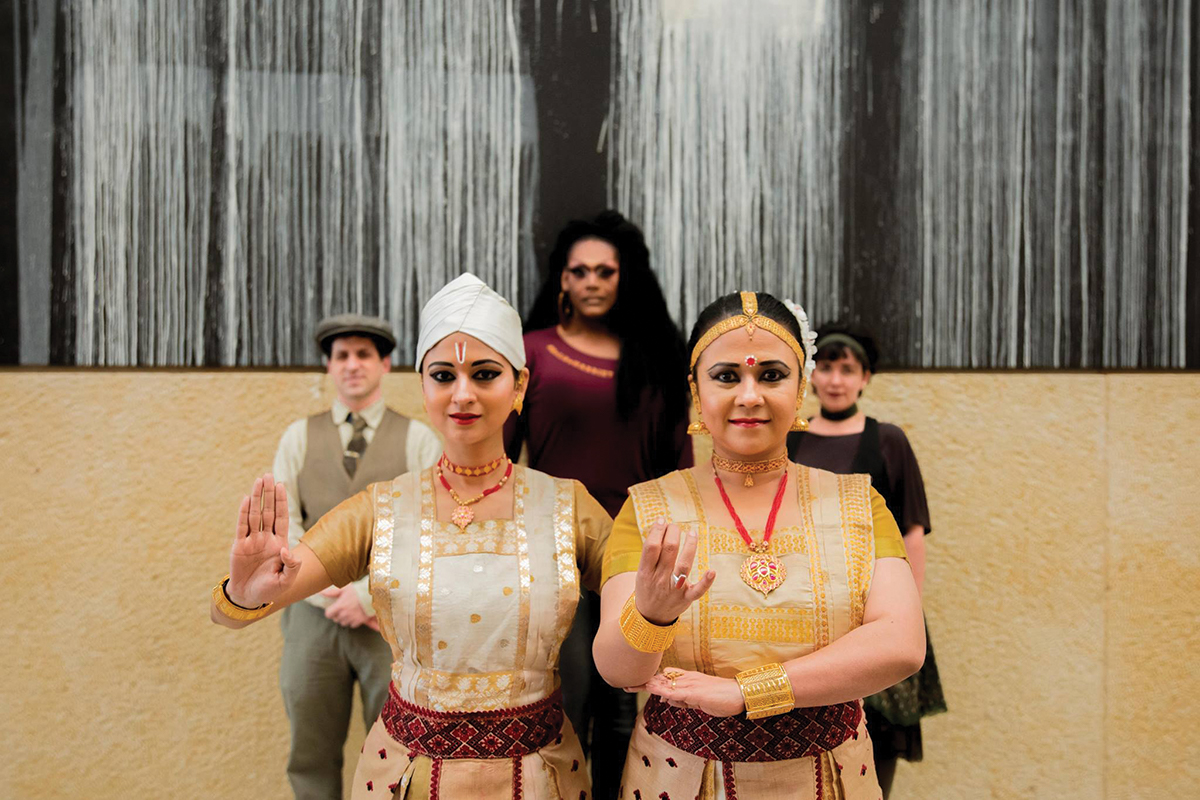
The Barnes Foundation held its second installation of a three-part artistic interpretation series that reflects on the season’s current art collection April 20. The event was hosted by collection Curator of Public Programs Kathleen Green in an intimate venue that attracted many enthusiastic spectators.This week’s performance was conducted by Philadelphia’s Sattriya Dance Company, celebrating the 10th anniversary of its conception.
Sattriya is an intricate dance that traces its origins back to the early Vaishnavite Monasteries in the foothills of Assam, India. Mimicking the style of kinesthetic storytelling, dancers ignite and bring to life spiritual parables through complex and vibrant movements while dressed in traditional, colorful garments.
The dance was created by prominent religious reformer Mahapurush Srimanta Sankardev who sought to share the wisdom of monotheistic practices through the synthesis of spiritual texts, dance and music. Early roots of the dance also emerged with a popular one-person operatic act called the Ankiya Nat.
For the duration of an hour, the showcase centered on themes of light defeating darkness, a mother’s great love, the joy of devotion, the order of Dharma and the divine act of restoration.
Co-Founder and Artistic Director of the Sattriya Dance Company Madhusmita Bora shared her roots that have carried her in a decades-long evolution with the dance. Performances aside, it wasn’t too long ago when the movement was even made available to its present thriving audience.
“This dance was inaccessible to women for centuries because it was only practiced by celibate monks as part of their daily ritualistic worship. In 2000, the dance became recognized as an art form in India. Since then the floodgates have opened and more and more women are embracing it — they have access to it now,” Bora shared.
Beginning her journey with the dance at the tender age of four years old, Bora has spent much time building a relationship with the art form. As she grew older, she dabbled in different dance forms, but Sattriya continued to call her name. By the dawn of 2002, her connections to monasteries began to open up opportunities and her passion flourished.
“What motivates me — well, this is my identity. It’s also my passion, it’s my heritage. We are always conscious about the lineage — it’s over 500 years old, the heartbeat is so far away but we try to carry it on and make it more accessible to everyone because I think the general theme of love and peace is what prevails through the dance, and that is something that connects people, especially in today’s world.”
Bora’s dance partner and sister-in-law Prerona Bhuyan — who also hails from the lands of Assam — shared similar sentiments. As she also had encounters with classical dance forms of the region at a young age, was able to expound on her thoughts.
“What attracted me to the dance is that it is from my motherland,” she said. “I connect with the words, and I started dancing when I was as little as four years old. I was doing a different dance form and, somehow, whenever I would perform to the songs of that dance form, I couldn’t connect — to the song, to the music. It was very alien to me.”
She would later go on to stumble upon the enigmatic Sattriya by chance, and it would impact her with a force that would yield a lasting impact on her life.
“This dance form, which was confined to the monasteries for a very, very long time [eventually] came out to the cities where I lived, and I had access to the teachers. I decided, ‘let me go and try it out,’ but it wasn’t a plan. I tried it out, and like a magnet that pulls you, it just pulled me in and just went on and on,” Bhuyan shared.
The dancer also has a connection point in her ancestry to the creator of the dance form, particularly the Puja devotees of cities stationed throughout Northeast India. “When you learn other dance forms, it is easier to switch to another,” she said. “[I] picked it up easily because the dance was already there inside my blood and body. It’s a part of who I am.”
But learning the unique and ancestral dance comes at no easy cost. Although information of the dance can be found in various publications, training at the monasteries remains the pinnacle method to receive the best of insights.
“You cannot train yourself. I travel every year to the monasteries and train with the monks. We stay in guest houses and also have auditoriums — the monks teach us and that is how we train. It takes many, many years of rigorous training and a lot of hard work. It’s almost like martial arts. You need a lot of discipline and training,” Bhuyan said.
Learning from several gurus and monks, the esteemed keepers of Sattriya, has ultimately proven to be a successful venture. The Sattriya Dance Company has made headlines in various countries around the world, including the prominent likes of the United Kingdom, Singapore and Mexico.
The Barnes Foundation Takeover sequence is slated to continue May 18, when “P is for Picture — Theatre” will begin exhibition.


